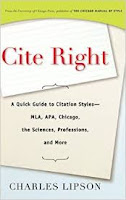 Part I: The Phenomena.
Part I: The Phenomena.
1. Inflection (Gregory T. Stump)
2. Derivation (Robert Beard)
3. Compounding (Nigel Fabb)
4. Incorporation (Donna B. Gerdts)
5. Clitics (Aaron L. Halpern)
6. Morphophonological Operations (Andrew Spencer)
7. Phonological Constraints on Morphological Rules (Andrew Carstairs-McCarthy)
Part II: Morphology and Grammar.
8. Morphology and Syntax (Hagit Borer)
9. Morphology and Agreement (Greville G. Corbett)
10. Morphology and Argument Structure (Louisa Sadler and Andrew Spencer)
11. Morphology and the Lexicon: Lexicalization and Productivity (Mark Aronoff and Frank
Anshen)
12. Morphology and Lexical Semantics (Beth Levin and Malka Rappaport Hovav)
13. Morphology and Pragmatics (Ferenc Kiefer)
Part III: Theoretical Issues.
14. Prosodic Morphology: (John J. McCarthy and Alan S. Prince)
15. Word Syntax (Jindrich Toman)
16. Paradigmatic Structure: Inflectional Paradigms and Morphological Classes (Andrew
Carstairs-McCarthy)
17. Morphology as Component or Module: Mapping Principle Approaches (Richard Sproat)
Part IV: Morphology in a Wider Setting.
18. Diachronic Morphology (Brian D. Joseph)
19. Morphology and Language Acquisition (Eve V. Clark)
20. Morphology and Aphasia (William Badecker and Alfonso Caramazza)
21. Morphology and Word Recognition (James M. McQueen and Anne Cutler)
22. Morphology in Language Production with Special Reference to Connectionism (Joseph
Paul Stemberger)
Part V: Morphological Sketches of Individual Languages.
23. Archi (Caucasian - Daghestanian (Aleksandr E. Kibrik)
24. Celtic (Indo-European) (James Fife and Gareth King)
25. Chichewa (Bantu) (Sam A. Mchombo)
26. Chukchee (Paleo-Siberian) (Irina A Muravyova)
27. Hua (Papuan) (John Haiman)
28. Malagasy (Austronesian) (Edward L. Keenan and Maria Polinsky)
29. Qafar (East Cushitic) (Richard J. Hayward)
30. Slave (Northern Athapaskan) (Keren Rice)
31. Wari (Amazonian) (Daniel L. Everett)
32. Warumungu (Australian - Pama - Nyungan) (Jane Simpson)



















